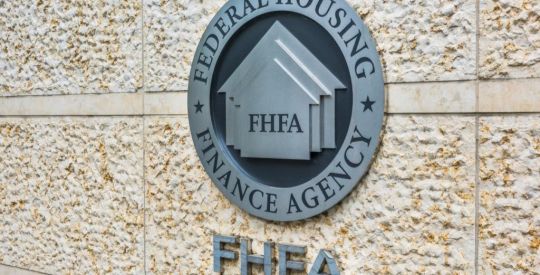Freddie Mac (FRE) said Friday that a large quarterly loss drove the company’s net worth into negative territory and has forced it to request its initial funding from the $100 billion committed to the firm by the U.S. Treasury in September. The GSE reported a substantial third quarter net loss of $25.3 billion, or $19.44/share, compared to a net loss of $1.2 billion, or $2.07/share, in the year-ago period. The loss left the company with a stockholders’ deficit of $13.8 billion, leading it to request the same amount from the Treasury to plug the hole on its balance sheet. The GSE said that its third-quarter results were driven by a $14.3 billion write-off of the company’s deferred tax assets, a $9.1 billion other-than-temporary write-down of investments, and $6.0 billion credit-related expenses. In a single word: ouch. Perhaps most telling in the GSE’s discussion of results, however, was a statement that cited more general economic malaise — rather than the credit crisis, as has been the case up to this point — as the key driver of the quarterly loss. Freddie said in a press statement that “declining home prices, increasing unemployment, a significant decline in consumer spending and a considerable tightening of both consumer and business credit” led to its quarterly loss. The language in the company’s 10-Q filing with the Securities and Exchange Commission was perhaps even more blunt, and said that “unemployment rates … worsened significantly” during the quarter, with California, Arizona and Nevada seeing a quarterly rise in unemployment between 14 and 27 percent. Credit costs soar Beyond economic problems, Freddie clearly saw its single-family mortgage portfolio worsen during the quarter. Severe delinquencies — borrowers more than 90 days late on their mortgages — rose 29 basis points from the second quarter to 122 basis points. Non-performing assets jumped almost 30 percent in just one quarter, reaching $35.5 billion at the end of Q3; REO inventory soared as well, rising 27.5 percent to more than 28,000 units. (Consider that just one year ago, REO was at 11,000 or so units.) Losses on REO properties sold continued to rise as well, driving further loss allowances. Freddie reported average loss severity of 29.3 percent, up from 25.2 percent in Q2 and 14.1 percent one year earlier — meaning that not only are delinquencies rising, but the losses on each foreclosure are growing, as well. The number of loan modifications grew quickly, from 4,827 in Q2 to 8,316 in Q3, but that positive jump was more than offset by incoming REO acquisitions — 15,880 new properties entered REO during Q3 alone, Freddie said. As with fellow GSE Fannie Mae (FNM), losses are centered on the Alt-A mortgage portfolio. Alt-A loans, which represented 10 percent of the single-family mortgage portfolio at the end of Q3, accounted for approximately 50 percent of our credit losses to-date this year. Also affecting credit risk is a growing number of borrowers facing loss of equity in their homes — Freddie estimated that a total of 9 percent of its single-family mortgage portfolio represents borrowers that are now underwater on their mortgage loans. A full 17 percent of borrowers in the portfolio have a current LTV of 90 percent or greater, based on the GSE’s estimates. For those interested in reading the full SEC 10-Q filing, click here. Write to Paul Jackson at [email protected].
Freddie Posts Wide Loss, Looks to Treasury for Funding
Most Popular Articles
Latest Articles
FHFA annual report highlights GSE actions on affordable housing
The report details actions taken by Fannie Mae and Freddie Mac to improve housing affordability, homeownership access and credit building.



